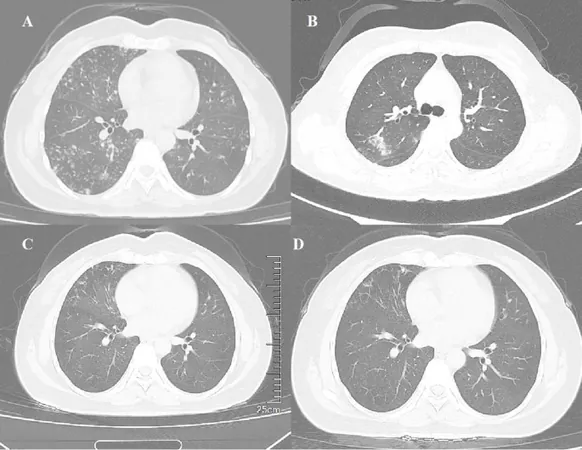
Breaking News: Discovery of a New Nontuberculous Mycobacterium Linked to Chronic Lung Disease!
2025-08-28
Author: Arjun
An Emerging Threat Unveiled
In a landmark discovery, researchers have identified a novel species of nontuberculous mycobacterium, dubbed **Mycobacterium hainanense sp. nov.**, linked to severe chronic pulmonary issues. This revelation could have significant implications for public health, especially in regions with high humidity where these bacteria thrive.
Understanding the Patient's Journey
A 42-year-old woman, employed at a power plant, presented with recurrent coughing and sputum production for over eight years, which suddenly worsened after a common cold. Despite several tests ruling out tuberculosis, her symptoms persisted, prompting a more in-depth investigation.
Advanced Diagnostics and Genetic Sequencing
Utilizing advanced technologies like metagenomic next-generation sequencing, researchers analyzed bronchoalveolar lavage fluid (BALF) from the patient. They successfully isolated Mycobacterium hainanense and several other bacteria, confirming the presence of a previously unidentified strain that could complicate treatment due to its similarity to other known species.
Clinical Progression and Treatment Challenges
Despite initial antibiotic treatments, including clarithromycin and rifampin, the patient showed little improvement after 17 months. Following established international guidelines, the treatment regimen was modified, and signs of lung lesions began to improve. However, the full impact of M. hainanense on her recovery remains to be seen.
A Closer Look at the New Species
The genome of Mycobacterium hainanense revealed unique characteristics with significant ecological implications. With a circular chromosome containing over 5,396 genes, this bacterium showcases sophisticated metabolic pathways suggesting an adaptability to diverse environments. Its presence in Hainan, a tropical region, raises questions about its pathogenic potential and environmental interactions.
Implications for Public Health Monitoring
The study highlights the need for ongoing surveillance of nontuberculous mycobacteria, especially as chronic pulmonary diseases become increasingly prevalent. Researchers emphasize that understanding the behaviors and risks associated with these emerging pathogens is critical for effective management and prevention.
What Lies Ahead?
Mycobacterium hainanense offers a chilling glimpse into the complexities of microbial research. As scientists continue to explore this new species and its potential effects on human health, the findings beckon more studies and discussions geared toward understanding and combating chronic pulmonary infections.





 Brasil (PT)
Brasil (PT)
 Canada (EN)
Canada (EN)
 Chile (ES)
Chile (ES)
 Česko (CS)
Česko (CS)
 대한민국 (KO)
대한민국 (KO)
 España (ES)
España (ES)
 France (FR)
France (FR)
 Hong Kong (EN)
Hong Kong (EN)
 Italia (IT)
Italia (IT)
 日本 (JA)
日本 (JA)
 Magyarország (HU)
Magyarország (HU)
 Norge (NO)
Norge (NO)
 Polska (PL)
Polska (PL)
 Schweiz (DE)
Schweiz (DE)
 Singapore (EN)
Singapore (EN)
 Sverige (SV)
Sverige (SV)
 Suomi (FI)
Suomi (FI)
 Türkiye (TR)
Türkiye (TR)
 الإمارات العربية المتحدة (AR)
الإمارات العربية المتحدة (AR)